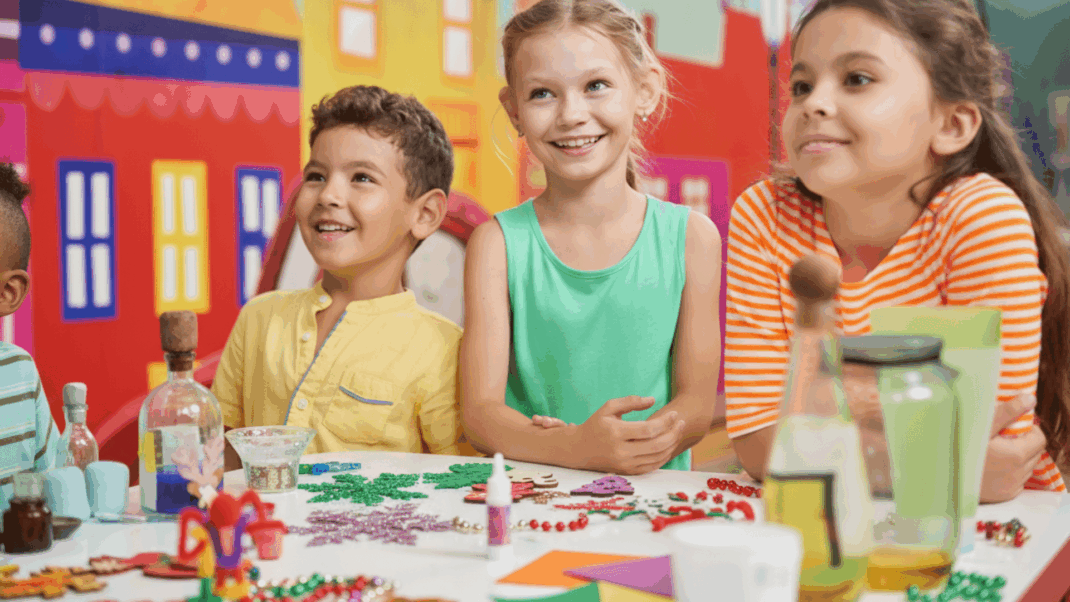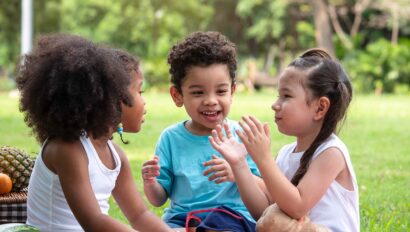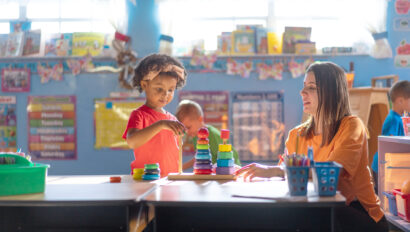How to Teach Kids About Global Holiday Traditions in Early Childhood Education in Georgia

Quick Answer
Teaching young children about global holiday traditions helps them grow into curious, kind, and inclusive learners. By exploring how families around the world celebrate, children begin to appreciate diversity, recognize shared values, and build empathy — one story, song, and celebration at a time.
Why Is It Important to Teach About Global Holiday Traditions?
Have you ever noticed how fascinated children are by lights, colors, and stories, especially during the holidays? It’s the perfect opportunity to open their eyes to a bigger world.
According to the National Association for the Education of Young Children (NAEYC), learning about different holidays helps children understand that there are many ways to express love, gratitude, and belonging. These lessons go beyond decorations or treats — they’re about connection and respect.
When we talk with children about how families celebrate Diwali, Hanukkah, Christmas, Eid, Kwanzaa, or Lunar New Year, we’re not comparing or ranking traditions. We’re helping them see that people everywhere share the same hopes: to feel loved, to give thanks, and to celebrate together.
How Can Teachers and Parents Introduce Global Holidays in Age-Appropriate Ways?
Young children learn best through play, stories, and hands-on experiences. That’s why early childhood experts like NAEYC recommend weaving holiday learning into what children already love doing: singing, building, painting, cooking, and pretending.
Here are a few simple, meaningful ways teachers and families can introduce global holidays:
- Storytelling and Books: Read multicultural stories that celebrate diverse traditions, like Children Just Like Me or Celebrations Around the World.
- Music and Movement: Explore songs, dances, or instruments from different cultures to make traditions come alive.
- Cooking Together: Taste something new — like baking mooncakes for Lunar New Year or preparing latkes for Hanukkah — to make learning sensory and memorable.
- Family Sharing: Invite families to share their favorite traditions or show photos of how they celebrate at home.
- Art and Craft Projects: Create candles, paper lanterns, or gratitude cards to spark conversations about symbols and meaning.
These activities encourage children to ask questions, notice similarities, and take pride in their own backgrounds.
How Does Teaching About Holidays Support Emotional Growth?
When children learn about global holidays, they’re not just learning about other cultures — they’re learning how to care.
Hearing about another child’s celebration helps them practice empathy and curiosity. When they share their own traditions, they feel valued and understood. Over time, this strengthens confidence and builds a classroom where everyone feels like they belong.
As NAEYC’s anti-bias education framework reminds us, young children form ideas about identity early. Giving them positive, accurate exposure to diverse holidays helps them develop respect for others while deepening pride in their own families and communities.
What Are the Best Practices for Teaching Holidays Inclusively?
Inclusive teaching means focusing on meaning, not material. Holidays shouldn’t just be about crafts or costumes — they’re about understanding values, history, and connection.
Educators can:
- Offer context — explain why a holiday is important to the people who celebrate it.
- Encourage open dialogue — let children ask questions and share observations respectfully.
- Avoid tokenism — celebrate more than one culture’s holiday and avoid oversimplifying traditions.
- Emphasize shared values — gratitude, kindness, giving, light, and love exist across all celebrations.
How Families Can Continue the Learning at Home
Families play an important role in helping children connect what they learn at school to their daily lives.
Try these easy, family-friendly ideas:
- Ask your child about holidays their classmates celebrate and what they learned.
- Visit a cultural event or museum together to experience a tradition firsthand.
- Create a “holiday around the world” book by drawing pictures or collecting symbols from different celebrations.
- Talk about your own family traditions and what they mean to you.
These small actions help children understand that our world is full of beautiful differences — and that celebrating them brings people together.
Frequently Asked Questions
Is it confusing for young children to learn about so many holidays?
Not at all. When taught through stories and experiences, children easily connect ideas like light, love, and gratitude across cultures. It actually helps them build stronger cognitive and emotional connections.
What if my family doesn’t celebrate a traditional holiday?
That’s perfectly fine. Every family has unique ways of celebrating or spending time together — maybe it’s baking cookies, volunteering, or taking a walk after dinner. Those traditions are just as meaningful.
How do teachers make sure all families feel included?
Teachers plan activities that reflect a wide range of traditions and invite families to share if they’d like. The focus is always on inclusion, not pressure to participate.
Can teaching holidays connect to other parts of the curriculum?
Yes! Exploring global holidays naturally supports literacy, art, music, geography, and social-emotional learning — all through play and connection.
Bringing It All Together
Teaching children about global holiday traditions is about much more than crafts or decorations. It’s about helping them understand that our differences make the world richer, not divided.
At Laugh and Learn, we use hands-on learning, storytelling, and family collaboration to help every child see themselves — and others — with joy and respect.
We’d love to show you how our classrooms celebrate curiosity, kindness, and culture every day. Schedule a visit at Laugh and Learn in Georgia and see how we help children grow into caring, global citizens.


